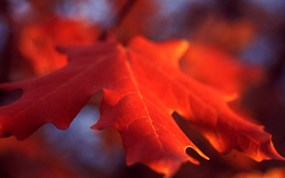
(© 2002 Brandon Kowallis) Trees Trees, with their woody stems (known as trunks) and branches with leaves provide humans with many things including building materials, fuel, sap, food such as fruit and nuts, rubber, alcohol, and pulp for paper. They also benefit other organisms by slowing storm runoff when they hold or absorb water, provide shelter for animals and plants, reduce the devastating effects of flooding, protect the world’s climate by absorbing carbon dioxide (too much contributes to the greenhouse effect), and beautify scenery. Gambel Oak: This tree is sometimes known as Scrub Oak. Its leaves are lobed and deeply divided. Gambel Oak is often found in groups of at least a dozen trees. These groups are clones usually produced after a fire by one tree’s root system. In the summer and fall, Gambel Oak’s acorns are an important source of food for mule deer and elk. This tree was also used by Native Americans for food and wood. Big Tooth Maple: This tree is often shrub-like in appearance with leaves that have 3 to 5 tooth-like lobes. It evolved from its eastern cousin the Sugar Maple. This causes scientists to argue whether Big Tooth Maple should be considered its own species or a variation of the Sugar Maple. In the fall it paints the canyon with brilliant reds, oranges, and yellows making it a favorite among campers and hikers. White Fir: This tree grows 60 to 100 feet tall and can live up to 300 years. Its needles are silvery blue to silvery green and are relatively flat curving up from the stem. The trunk has a whitish grayish color and is used for lumber. In the winter White Fir is often used for Christmas trees by humans and for food by squirrels.
Mexican Cliffrose: This shrub has a creamy yellow flower, light red bark, and feathery fruits. It is found on sunny hillsides, and is used by wildlife in the winter as a source of food and by humans to make tea. The Native Americans have used the plant’s bark for making baskets and the wood for constructing arrows. Rubber Rabbitbrush: This is a large shrub with linear, grayish blue leaves and clusters of yellow flowers. This plant likes to establish itself in disturbed sites and is found on sunny hillsides. It is a unique shrub because it has small amounts of rubber and resin (used to make plastic) found within its branches. Woods' Rose: This is a small shrub with rose-like leaves and small flowers with five pink petals. It is found in areas that receive more water than surrounding arid environments. The petals of the Woods' rose have been used for potpourri, and the pollen is used by honey bees. The hips can be used to make tea, fruitcakes, jellies, and puddings. |
Last updated: March 24, 2020
